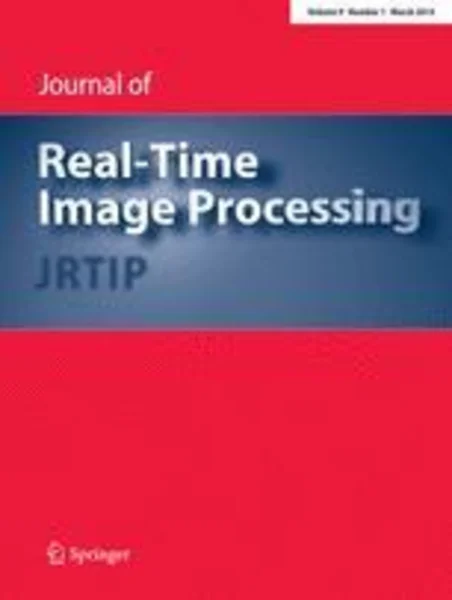-
a competitive study of the pseudoflow algorithm for the minimum s–t cut problem in vision applications
جزئیات بیشتر مقاله- تاریخ ارائه: 1392/07/24
- تاریخ انتشار در تی پی بین: 1392/07/24
- تعداد بازدید: 924
- تعداد پرسش و پاسخ ها: 0
- شماره تماس دبیرخانه رویداد: -
rapid advances in image acquisition and storage technology underline the need for real-time algorithms that are capable of solving large-scale image processing and computer-vision problems. the minimum s–t cut problem, which is a classical combinatorial optimization problem, is a prominent building block in many vision and imaging algorithms such as video segmentation, co-segmentation, stereo vision, multi-view reconstruction, and surface fitting to name a few. that is why finding a real-time algorithm which optimally solves this problem is of great importance. in this paper, we introduce to computer vision the hochbaum’s pseudoflow (hpf) algorithm, which optimally solves the minimum s–t cut problem. we compare the performance of hpf, in terms of execution times and memory utilization, with three leading published algorithms: (1) goldberg’s and tarjan’s push-relabel; (2) boykov’s and kolmogorov’s augmenting paths; and (3) goldberg’s partial augment-relabel. while the common practice in computer-vision is to use either bk or prf algorithms for solving the problem, our results demonstrate that, in general, hpf algorithm is more efficient and utilizes less memory than these three algorithms. this strongly suggests that hpf is a great option for many real-time computer-vision problems that require solving the minimum s–t cut problem.
مقالات جدیدترین رویدادها
-
استفاده از تحلیل اهمیت-عملکرد در ارائه الگوی مدیریت خلاقیت سازمانی و ارائه راهکار جهت بهبود
-
بررسی تاثیر ارزش وجوه نقد مازاد بر ساختار سرمایه شرکت های پذیرفته شده در بورس اوراق بهادار تهران
-
بررسی تأثیر سطح افشای ریسک بر قرارداد بدهی شرکت های پذیرفته شده در بورس اوراق بهادار تهران
-
بررسی تأثیر رتبه بندی اعتباری مبتنی بر مدل امتیاز بازار نوظهور بر نقد شوندگی سهام با تأکید بر خصوصی سازی شرکت ها
-
تأثیر آمیخته بازاریابی پوشاک ایرانی بر تصویر ذهنی مشتری پوشاک ایرانی (هاکوپیان)
-
اهمیت استراتژی مدیریت اکوسیستم در منطقه گردشگری دریای عمان
-
بررسی منشا گارنت های موجود در گرانودیوریت های منطقه دهنو، شمال غرب مشهد، استان خراسان رضوی
-
نقش سرمایه فکری در بهبود فرآیندهای اقتصادی
-
مقایسه تأثیر لیزر کم توان و اولتراسوند در مبتلایان به سندرم درد عضلانی- فاشیایی
-
effect of (zn(oh)2)3(znso4)(h2o)5 on the performance of ru–zn catalyst for benzene selective hydrogenation to cyclohexene
مقالات جدیدترین ژورنال ها
-
مدیریت و بررسی افسردگی دانش آموزان دختر مقطع متوسطه دوم در دروان کرونا در شهرستان دزفول
-
مدیریت و بررسی خرد سیاسی در اندیشه ی فردوسی در ادب ایران
-
واکاوی و مدیریت توصیفی قلمدان(جاکلیدی)ضریح در موزه آستان قدس رضوی
-
بررسی تاثیر خلاقیت، دانش و انگیزه کارکنان بر پیشنهادات نوآورانه کارکنان ( مورد مطالعه: هتل های 3 و 4 ستاره استان کرمان)
-
بررسی تاثیر کیفیت سیستم های اطلاعاتی بر تصمیم گیری موفق در شرکتهای تولیدی استان اصفهان (مورد مطالعه: مدیران شرکتهای تولیدی استان اصفهان)
-
مطالعه تاثیر بانکداری الکترونیکی بر نیت رفتاری مصرف کنندگان در صنعت بانکداری
-
بررسی درآمدهای مالیاتی خراسان شمالی و ارتباط بین درآمد مصوب شده و عملکرد از سال 90-96
-
نقش توان مندی مدیران در کشف کلاه برداری گزارشگری مالی با در نظر گرفتن حضور و نفوذ صاحب منصبان دولتی در ارکان اداره شرکت ها با تعیین درجه سیاست دولتی بر اساس شاخص sa
-
surface adsorption of carbon monoxide and hydrogen gases mixed with boron nitride (7 ,7) nanotubes by monte carlo method
-
the effects of employees’ integrity, responsibility, compassion and forgiveness on corporate social responsibility in iranian private sector in east and west of azerbaijan in iran




سوال خود را در مورد این مقاله مطرح نمایید :